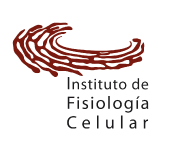Study of the ultrastructure of Enterococcus faecalis and Streptococcus mutans incubated with salivary antimicrobial peptides
Blancas, B., Lanzagorta, M. de L., Jiménez?Garcia, L. F., Lara, R., Molinari, J. L., & Fernández, A. M. (2021). Study of the ultrastructure of Enterococcus faecalis and Streptococcus mutans incubated with salivary antimicrobial peptides. Clinical and Experimental Dental Research, 7(3), 365?375. doi:10.1002/cre2.430
Objectives: Enterococcus faecalis has been associated with root canal infections, while Streptococcus mutans has a central role in the etiology of dental caries. One of the main reasons of endodontic failure has been associated to the presence of E. faecalis and the formation of biofilms. S. mutans inhabits the oral cavity, specifically the dental plaque, which is a multispecies biofilm formed on the hard surfaces of the tooth. The biofilm formation is the main factor determining the pathogenicity of numerous bacteria. Natural antimicrobial peptides in the saliva protect against pathogenic bacteria and biofilms. The aim of this study was to assess the ultrastructural damage induced by salivary peptides in bacteria involved in biofilms has not been previously studied. Material and methods: Enterococcus faecalis and S. mutans incubated with cystatin C, chromogranin A, or histatin 5 were morphologically analyzed and counted. The ultrastructural damage was evaluated by transmission electron microscopy (TEM). Results: A decrease in bacterial numbers was observed after incubation with cystatin C, chromogranin A, or histatin 5, compared to the control group (P < 0.001). Ultrastructural damage in E. faecalis and S. mutans incubated with salivary peptides was found in the cell wall, plasma membrane with a decreased distance between the bilayers, a granular pattern in the cytoplasm, and pyknotic nucleoids. Conclusions: This study demonstrated that salivary peptides exert antibacterial activity and induce morphological damage on E. faecalis and S. mutans. Knowledge on the ultrastructural damage inflicted by salivary antimicrobial peptides on two important bacteria causing dental caries and root canal infections could aid the design of new therapeutic approaches to facilitate the elimination of these bacteria.



